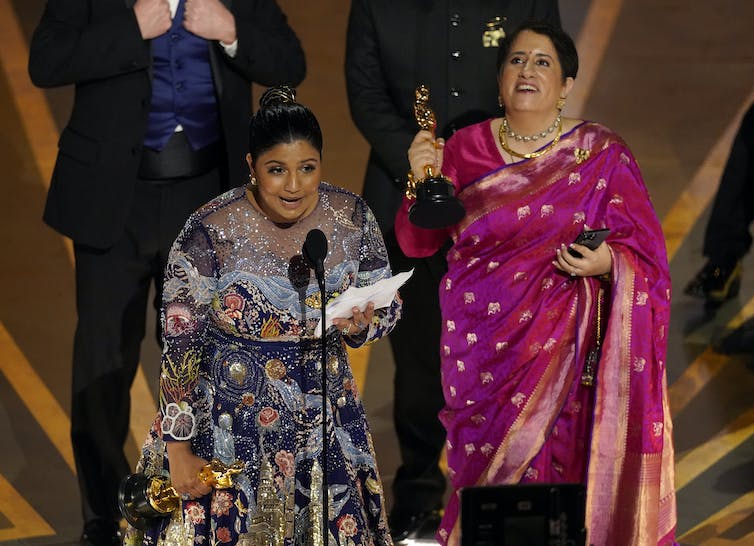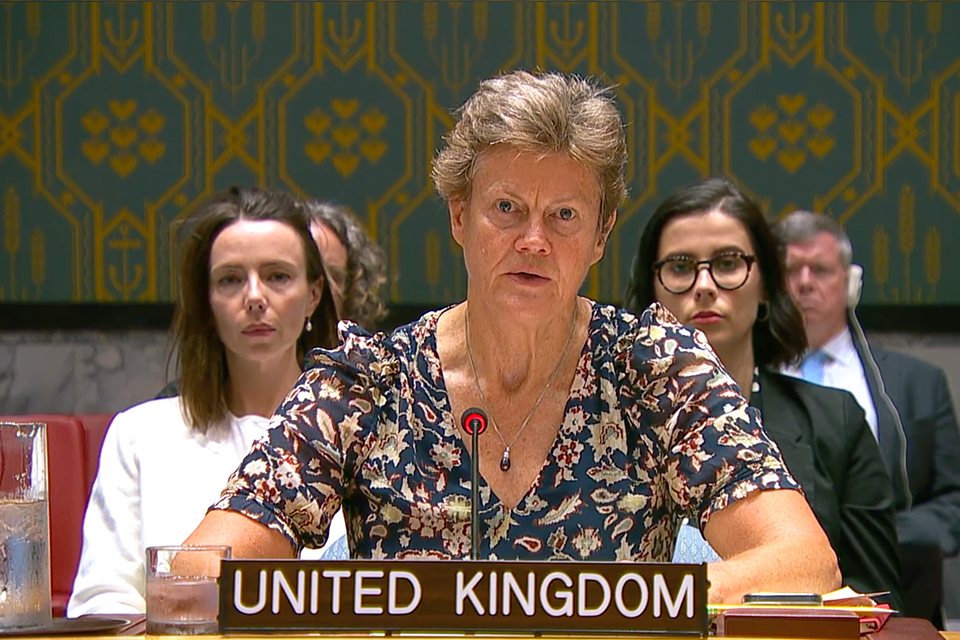Months after the Indian film The Elephant Whisperers won the Oscar for Best Documentary Short
at the Academy Awards this past March, the mahout (elephant rider or caretaker) couple Bomman and Bellie at the centre of the film filed a legal notice.
The notice from the Indigenous couple, who belong to the Kattunayakan community in India’s Tamil Nadu province, demanded 20 million rupees (about $330,000) from the filmmaker Kartiki Gonsalves and the film’s production house, Sikhya Entertainment, run by Guneet Monga.
The couple complained about being subjected to trying situations during the shoot and the expenses incurred to help execute scenes according to the filmmaker’s convenience.
In defence, the makers issued a statement. Though not responding to the allegations directly, it said the film created awareness about the mahout community and led to socioeconomic benefits for them.
They mentioned donations from M.K. Stalin, the chief minister of Tamil Nadu, towards assisting 91 elephant caretakers in the state’s two elephant camps.
Strangely, the controversy remained focused on the issue of financial compensation following the film’s success. It eclipsed the structural conditions in contemporary documentary filmmaking that likely affected this complication in the first place.
The missing story
Set in the Theppakadu Elephant Camp inside the Mudumalai Tiger Reserve, The Elephant Whisperers dramatizes the emotional bond between the couple and an orphaned elephant, Raghu, whom they have nurtured since finding him as an infant dying of injuries. For the film’s 41-minute runtime, viewers witness idyllic moments of human-animal relationships that peak when the forest authorities eventually separate Raghu from the couple.
As the filmmaker notes, the short film is intended to highlight “the beauty of the wild spaces in South India and the people and animals who share this space.”
Yet, in this focus, it fails to generate a critical understanding of systemic problems hindering elephant conservation practices.
These include mahouts’ underpaid contracts with temples and the tourism industry, or as activists in Kerala have documented, abusive overworking of captive mammals, leading to a high elephant mortality rate in that province.
Despite Bomman and Bellie hailing from the Kattunayakan tribe, the documentary ignores the forest department’s deceitful resettlement of Kattunayakan, Paniyan and other Adivasi communities from their ancestral hamlets in the Mudumalai Tiger Reserve’s buffer zone. Nor does it dwell on the filmmakers’ navigation of the Indigenous environment and their framing of the story as outsiders.
Preference for individual over social
In her article, “How Does it End? Story and the Property Form” filmmaker and writer Brett Story critiques the conventional three-act story structure prevalent in contemporary non-fiction narratives.
Such narratives usually involve a main character with a heroic journey, a climax and a resolution. According to her, this story structure is considered universally valid and timeless.
But most importantly, this structure corresponds with the “property form” under capitalism. There is a bias for the individualism of the “hero” who owns the story — like property. As a result, documentary film markets tend to prioritize a “preference for the individual over the social, the ‘character’ over the condition, experience over consciousness.”
Unpaid labour
Concurrent with this preference for individual heroes is the unacknowledged labour of the documentary protagonist. Media scholar Silke Panse argues that “the work of the documentary protagonist cannot be seen separately from the aesthetics of the work.” She outlines the emotional and material labour involved when they perform for the documentary gaze. This labour co-creates the quality, form and nature of images. Therefore, in documentary realism, the “protagonists are the image.”
When the story becomes a marketable product, the production conditions, processes and relationships behind the storytelling are further obscured. It devalues the passage of negotiations and emotional investment that contribute to the filmmakers’ relationship with documentary subjects. Post-doctoral scholar Emily Coleman contends that in this context, relationship-building between the maker and the subject should be understood as “a practice of creative labour.”
Independent filmmakers often begin by self-financing documentary projects, motivated by underlying feelings of responsibility toward concerned issues. About wildlife documentaries, film scholar Alexa Weik von Mossner highlights the “altruistic motivation” behind emotional animal stories that end up helping filmmakers connect their projects to specific conservation projects.
But, personal altruism potentially feeds into the power dynamics between the one who cares to represent and the other who needs representation.
Market menace
Project development support for creative non-fiction mostly comes through pitching sessions at documentary film forums like Hot Docs, Sheffield DocFest, the International Documentary Film Festival Amsterdam and so on.
These spaces facilitate a financial market for producers, commissioning editors, broadcasters, film festival scouts and related commercial agents. According to Francesco Ragazzi, associate professor of international relations at Leiden University, this funding circuit exclusively relies on attracting profit and large audiences. Filmmakers are pushed towards character-oriented narrative documentaries that are sellable to a broader demographic.
Ragazzi notes how typical pitching forum questions such as “Can your character hold 52 minutes?” or “What is the story arc of the film?” shape the values and aesthetics of contemporary documentary films.
With The Elephant Whisperers, after Gonsalves started an independent round of production in 2017, Netflix accepted her promo pitch in 2020. Producer Monga also joined the project following its preliminary development. More than 450 hours of footage filmed over five years was cut into the documentary short.
(AP Photo/Chris Pizzello)
Re-evaluating terms of participation
It is not surprising for contentious claims to emerge concerning the extensive labour hidden underneath compact, character-driven documentary stories once films have gained substantial success or cultural capital.
A source close to the production dispelled Bomman and Bellie’s allegation, stating they got duly paid according to the documentary’s contract.
While production and distribution companies must compensate documentary subjects, it is equally necessary to re-evaluate the terms and conditions of people’s participation in creative non-fiction projects.
Market-driven motives of documentary storytelling reduce people to attention-holding characters and their lives to the service of dramaturgy. This extractive approach is characterized by transactional terms. Filmmakers and producers should acknowledge subjects as co-creative partners in production and distribution processes. For that, documentary storytelling needs to change first.




